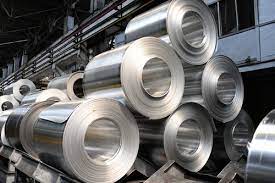Earlier this week, the China Nonferrous Metals Industry Association reported a 30% decline in the volume of aluminum products exported from China to the European Union. Aluminum manufacturing analysts quickly pointed out that this most likely resulted from the bloc’s 2023 carbon border tariff.
The EU’s Carbon Border Adjustment Mechanism (CBAM) represents a new way to establish an equitable cost for the carbon emissions stemming from the manufacture of carbon-intensive goods imported into the EU. That said, the aim is to promote cleaner industrial practices worldwide, not just for Chinese aluminum manufacturing. The CBAM’s phased implementation also coincides with the reduced free allowances allocated under the EU Emissions Trading System, thus aiding the transition toward decarbonization within EU industries.
Delay in Carbon Charges Sparks Controversy
The first phase of the CBAM launched in October 2023. However, administrators will not collect charges related to carbon dioxide emissions until 2026. Nonetheless, those importing commodities into the EU must report all greenhouse gas emissions related to product production.
China currently exports commodities such as steel and aluminum to Germany, France, and Italy. According to this report, imports of aluminum products from China to the EU monitored under the CBAM were 689,000 tons in 2023. This represents a 30% drop from the previous year.
The China Nonferrous Metals Industry Association indicates that the products in question included aluminum structures and aluminum plate, sheet, and strip, and accounted for about 9% of China’s total exports of those products. The report further revealed that the total trade value for those products dropped by 26% to about $3.16 billion U.S, or 22.76-billion yuan.
Aluminum Manufacturing and the Russia, China, and India Triangle
After Russia’s invasion of Ukraine, Russia and China became more and more dependent on each other regarding aluminum. According to Reuters, China’s 2023 imports of unwrought aluminum were double the previous year, marking the second-highest annual total since the beginning of this century. Furthermore, the import of the primary metal went up to 1.54 million metric tons from 668,000 tons in 2022, narrowly missing the record of 1.58 million tons set in 2021.
Experts point out that the notable distinction between the peaks of 2021 and 2023 lies in the composition of inbound shipments. While Russian metal only accounted for 18% of volumes in 2021, this ratio soared to 76% the following year. Analysts largely attribute this to punitive import duties imposed by the U.S. and self-sanctioning measures taken in certain European regions, which disrupted previous trade patterns involving Russia.
Alumina Imports Surge from India amidst Russian Sanctions
Facing these sanctions, Russia also stepped up its alumina imports from India, though Indian aluminum already accounted for a major portion of Russia’s 2021’s bumper imports. Russia uses the aluminum feedstock to operate its Siberian facilities. According to reports, these imports help reduce the country’s reliance on China while also cutting down prices.
After the Ukraine invasion, Russia, the second-largest aluminum producer in the world, lost access to multiple alumina sources. The first was in Ukraine itself. The other major source was Australia, which banned the supply of this critical raw material to Russia. However, Chinese and Indian imports are now filling this gap.
Green is Good for Chinese Aluminum Manufacturing
Despite the prolonged crisis in China’s metals-intensive property market, reports indicate that strong demand from electric vehicles and renewables sectors continues to bolster aluminum demand. And despite domestic output reaching new highs, imports continue to surge. In September 2023, China’s aluminum production reached a record level, fueled by smelters in Yunnan, the country’s fourth-largest aluminum-producing region. Currently, these smelters continue to ramp up production, benefiting from an improvement in hydropower supply.

 Iran Energy News Oil, Gas, Petrochemical and Energy Field Specialized Channel
Iran Energy News Oil, Gas, Petrochemical and Energy Field Specialized Channel



